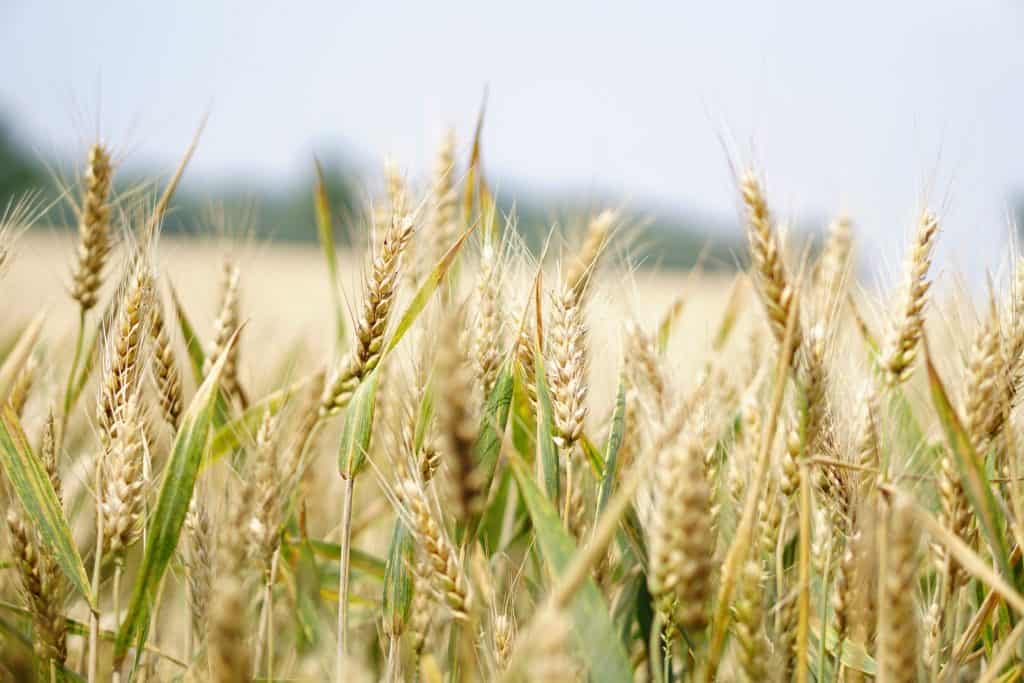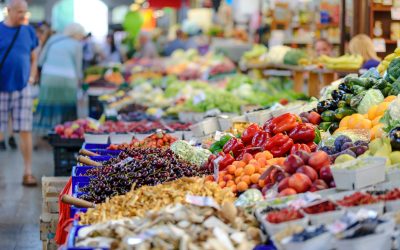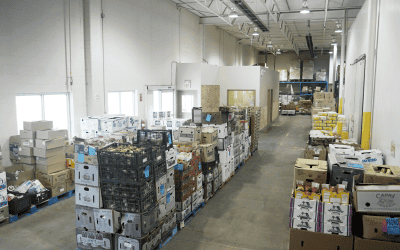A business case for reducing food loss and waste (FLW) in North America to help reduce our climate impact. Based on key findings from Second Harvest and the Commission for Environmental Cooperation (CEC), a joint webinar from October 2022.
Organizations in the food industry are always working toward reducing food loss and waste (FLW). It’s time to double down on our efforts because current climate crisis and rising food insecurity are urgent issues.
In Canada, 11.2 million tonnes—$49.46 billion worth—of good food is wasted every year. Globally, more than 8% of greenhouse gas emissions come from FLW. These harmful emissions directly contribute to our current climate crisis. Of the United Nation’s 17 Sustainable Development Goals, goal 12 is to ensure sustainable consumption and production patterns. One of its key targets is 12.3 on global food loss and waste:
By 2030, halve per capita global food waste at the retail and consumer levels and reduce food losses along production and supply chains, including post-harvest losses.
It’s not just food that we’re wasting—it’s also the finite resources used to make, process, package, transport, sell and buy it. For example:
- We could fill 7 Million Olympic-sized swimming pools with the water footprint of FLW in North America every year.
- 41 million cars would have to drive continuously for a year to equal the annual greenhouse gases of FLW in North America.
- 260 million people could be fed every year with lost and wasted food.
How reducing food loss and waste improves your business’s bottom line
If your factory throws away $5,000 worth of produce every month for various reasons, including spillage, grade issues, market rejection, or trimming during processing, that’s a $60,000 annual loss on your bottom line. It’s also a wasted opportunity. What if that loss could be used in a new product or re-invested into solutions to prevent waste in the first place?
One problem is that a lot of businesses either haven’t or don’t know how to measure food loss and waste.
Start there and we can better understand the scope of our impact—and make important changes to be more sustainable. As Second Harvest and the CEC say in our joint webinar on FLW:
“What gets measured, gets managed.”
How to measure and manage your business’s food loss and waste
Find your why: What’s motivating your business to change?
Determine why your business wants to measure, prevent and reduce FLW.
- Is it economic, environmental, social, or a combination?
- Is it because your organization cares about sustainability?
- Is it to be competitive or keep up with the times?
- Does it fit into your mission values and vision—or company culture?
- Is it to improve your bottom line and efficiencies?
- Is it important to your business to lessen your footprint on the climate crisis or to help relieve food insecurity?
Find your purpose(s) and use it (/them) as your driving motivation.

Make your business case to tackle FLW for our climate
What if food loss and waste were not just a cost of doing business? What if the environmental, economic and social benefits of preventing and reducing FLW far outweighed the cost to change?
Here are some facts from our 2022 Wasted Opportunity report to reference:
- 3.2M tonnes of surplus edible food is produced by ambien Canada’s food industry each year
- 96% of it is not rescued or redistributed for human consumption
- 127,177 Canadian food businesses are potential donors of surplus edible food donors—your food business may be one of them
Updating your business systems to be more sustainable
The CEC has many great helpful resources to help guide you, including a Business Cost Calculator of FLW. They also have practical guides on how to measure FLW, find the root causes, make system changes and measure impact. Make your business case by calculating the amount and cost of FLW and determining its causes, solutions and benefits for change. To do this, you’ll need to take a close look at the specific causes of FLW in your organization.
Once you’ve determined the root causes, track them in a daily log. You may find that some reasons for FLW happen regularly or in high volumes and should be prioritized. For example, of the millions of tomatoes that are grown each year in Canada, it is expected that hundreds of thousands won’t make it to market.
“We live in an environment where food is cheap and plentiful and few people have clomid experienced hunger or food insecurity. Therefore societal attitudes do not support avoiding food waste.”
—Survey Respondent, Second Harvest’s Report on The Avoidable Crisis of Food Waste
It’s time to get solution-focused. Do it for climate, community and your bottom line. Together, we can make a real impact.
Learn more about food loss and waste and how your business can measure, manage and reduce it. Register to donate your surplus food.





